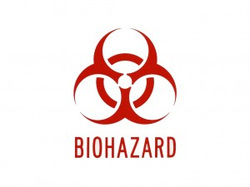Author:
|
Back to Blog
 Bloodborne pathogens are infectious microorganisms in human blood that can cause disease in humans. These pathogens include, but are not limited to, hepatitis B (HBV), hepatitis C (HCV) and human immunodeficiency virus (HIV). Needlesticks and other sharps-related injuries may expose workers to bloodborne pathogens. Individuals in many occupations, including first aid team members, housekeeping personnel in some industries, nurses and other healthcare personnel at facilities may be at risk of exposure to bloodborne pathogens. Since it is hard and difficult to determine pathogens in any blood specimen, and that some blood borne diseases are lethal, standard medical practices regarding blood products, procedures regarding blood extraction or any activity related with blood products should be imposed. All should be considered potentially infectious. Blood and Body Fluid precautions are a type of infection practice or technique that aims to minimize this sort of disease transmission. In order to reduce, minimize or completely eliminate the hazards and dangers of occupational exposure to blood borne pathogens, institutions and workplaces must design, plan and implement an exposure control plan for the worksite or workplaces with complete description of details and flows for employees protective measures. The plan or flow process must have or should describe how the institution will use a combination of engineering and work practice protocols, ensure the use of protective personal clothing and devices and equipment, provide trainings and seminars regarding blood borne pathogens, medical surveillance, Hepatitis B vaccinations, signs, labels and brochures and other provisions. Engineering controls are the primary means of eliminating or minimizing employee exposure and include the use of safer medical devices, such as needleless devices, shielded needle devices, and plastic capillary tubes. Needlestick injuries is the most common cause of blood borne infections in a healthcare environment. It is a percutaneous piercing wound typically set by a needle point, but possibly also by other sharp instruments or objects. Commonly encountered by people handling needles in the medical setting, such injuries are an occupational hazard in the medical community. Occupational needlestick injuries are mainly focused on the healthcare environment, but law enforcement is at particularly high risk for incidental needlesticks, though this population is commonly overlooked. Diseases like HIV and and Hepatitis C can be transferred to each individual, from one another through used hypodermic needles, exposed wounds or blood transfusion. For this reason, Blood borne pathogens certification is required for healthcare professionals, or more precisely for each individual handling blood or blood products, and who are also at risk for needle stick injuries. The test for certification may be taken through the Health Department and is offered online by many centers. OSHA has developed a webpage to provide workers and employers useful, up-to-date information on bloodborne pathogens. For other valuable worker protection information, such as Workers’ Rights, Employer Responsibilities and other services OSHA offers. Online certification for blood pathogens and online first aid certification are readily available on different websites and may serve as a useful tool for increasing awareness regarding blood borne pathogens, its prevention and how to completely nullify it. To take a class which should be done ever year give us a call at 503-538-2610 www.cprnorhtwest.com
0 Comments
Read More
Your comment will be posted after it is approved.
Leave a Reply. |

 RSS Feed
RSS Feed